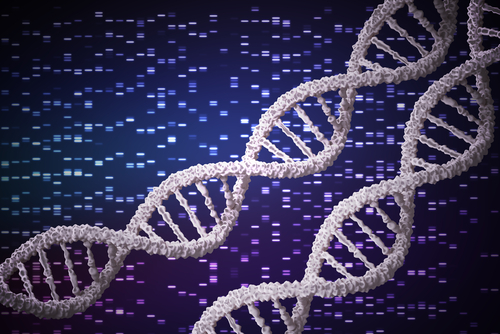Specific Mutation and Amino Acid Change Linked to MS Risk in Study from Japan

An amino acid change to phenylalanine, and a specific class I HLA gene variant are associated with greater risk for multiple sclerosis (MS), according to a study in Japanese patients.
Researchers also identified an HLA variant, or mutation, associated with neuromyelitis optica spectrum disorder (NMOSD), an autoimmune condition often misdiagnosed as MS.
Their study, “Next-generation sequencing identifies contribution of both class I and II HLA genes on susceptibility of multiple sclerosis in Japanese,” was published in the Journal of Neuroinflammation.
The link between HLA genes — which code for proteins that help the body distinguish between its own and proteins those belonging to invaders like bacteria — and MS risk is known. Specifically, high-resolution methods identified protective polymorphisms (variants) in class I HLA genes, while other studies found variants associated with higher likelihood and younger onset of MS.
Research in European and Japanese patients has also linked specific HLA variants with higher or lower risks of NMOSD. However, detailed assessments of classical and non-classical HLA genes implicated in MS and NMOSD risk in the Japanese population have not been performed.
To address this gap, a team led by scientists at Osaka University Graduate School of Medicine conducted a genetic analysis called next-generation sequencing in 45 patients with MS (35 women, mean age 43.6), 31 with NMOSD (24 women, mean age 52.7), and 429 healthy controls. Age at disease onset was 34.3 years in MS patients, and 47.4 in those with NMOSD.
Data from patients were collected from three medical institutes in Japan. All lived in the country’s Kinki region.
Among the 16 sequenced HLA genes, results revealed that HLA-DRB1*15:01, a variant previously identified as an MS risk factor, had the strongest association with this disease.
A subsequent analysis of the top-associated alleles (gene copies) showed that HLA-DRB1*04:05 (previously implicated in MS risk and severity), HLA-B*39:01, and HLA-B*15:01 were all independently linked with MS susceptibility. However, these mutations did not impact the age of disease onset nor its severity.
As for the link with specific amino acids (the building blocks of proteins) that result from these HLA variants, the researchers found that phenylalanine at position 9 (Phe9) of HLA-DQB1 — a class II gene — had a stronger effect on MS susceptibility than HLA-DRB1*15:0.1.
Together with published reports in European patients, “these results suggest a relationship between class I HLA alleles and MS susceptibility, as well as class II HLA alleles, in both Europeans and Japanese,” the researchers wrote.
“While further validation study should be warranted, our results suggested that HLA-DQβ1 Phe9 is a causal driver of HLA variants for MS risk in the Japanese population,” they added.
In respect to NMOSD, the mutation with the most significant association was HLA-DQA1*05:03, which has been linked other immune-mediated diseases, namely celiac disease and type 1 diabetes. This suggests that “HLA-DQA1*05:03 is a newly identified HLA allele associated with NMOSD in the Japanese population,” the researchers wrote.
No amino acid variants correlated with NMOSD susceptibility.
“Our study,” the team concluded, “contributes to the understanding of the genetic architecture of MS and NMOSD in the Japanese population.”






